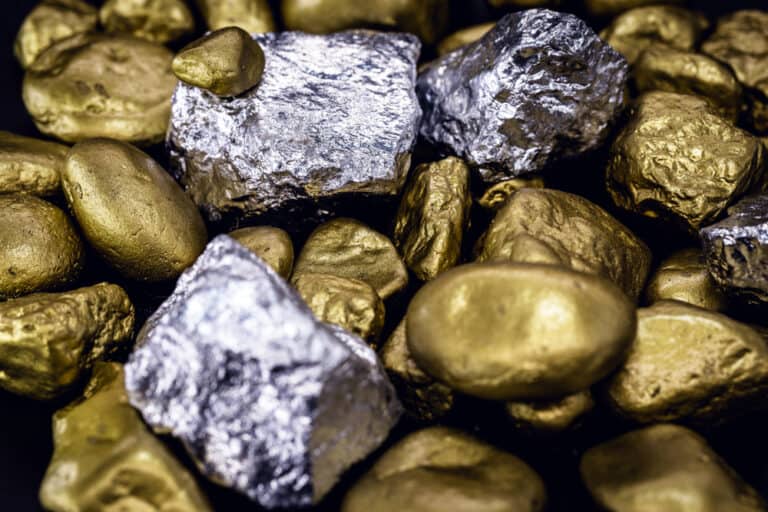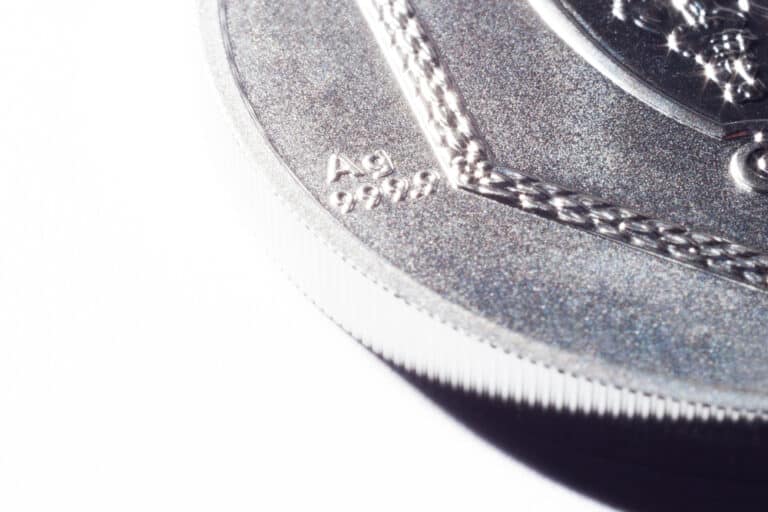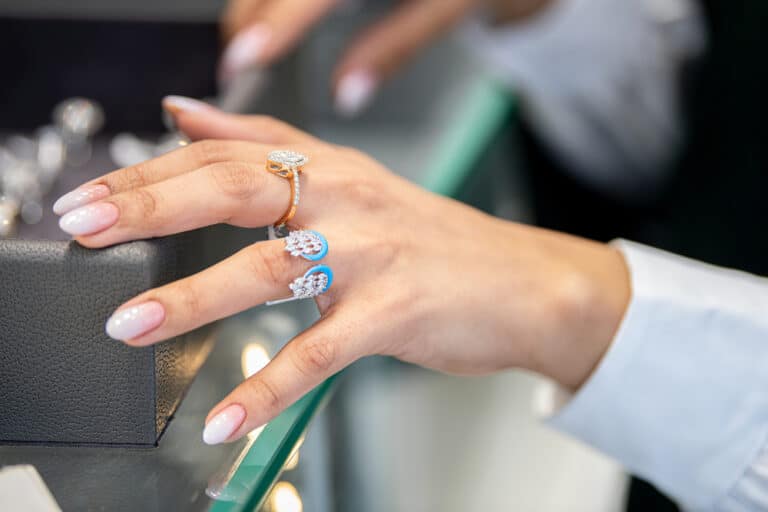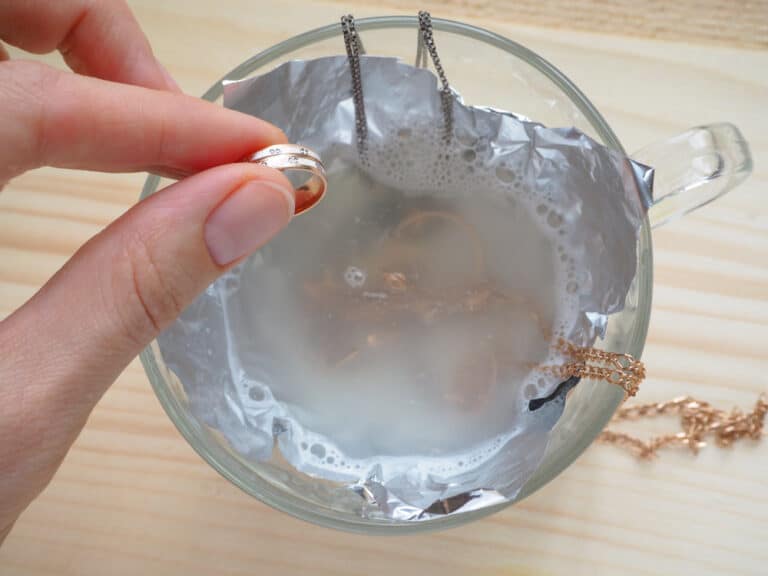Silver is one of the most common types of precious metals used for jewelry. The metal is also used in various investments, ranging from raw metal to silver coins. Taking care of them is necessary; otherwise, your silver might turn black, but why does this happen?
Silver turns black for various reasons; most commonly, though, oxidization is the biggest culprit. One factor that gets overlooked is silver turns black when it comes into contact with other types of metal. However, the metal takes a long time to turn black and is not something to worry about.
There are more reasons why silver turns black. In this article, I will discuss the reasons why and give you a few tips and tricks to prevent it from happening. Also, I will give you a few pointers on what to do if your silver does turn black. So, I recommend that you keep reading.
5 Reasons Why Silver Turns Black
As mentioned, there are various reasons why silver turns a dark color. It could be something simple that is easy to avoid or happen due to reasons out of your control. Don’t worry; once you understand the reasons, preventing them becomes a lot easier.
Just before we dive into the sections, I recommend that you bookmark this page, or print it out, That way, you will always have access to this information. Let’s get into it.
Chemical reactions
Sometimes silver can turn black if it comes into contact with certain chemicals. This might happen if, for example, someone accidentally spills bleach or chlorine on their silver jewelry or flatware.
Here are a few chemicals to watch out for:
- Bleach: Chlorine bleach, in particular, can react with silver and cause it to turn black.
- Sulfur compounds: Compounds containing sulfur, such as hydrogen sulfide, sulfur dioxide, and other sulfides, can cause silver to tarnish and turn black.
- Salts: Certain salts, such as those found in seawater or sweat, can cause silver to corrode and turn black over time.
- Air pollutants: Silver can be exposed to pollutants in the air, such as sulfur dioxide and nitrogen oxides, which can cause it to tarnish and turn black.
- Food and drink: Certain foods and drinks, such as eggs, onions, and vinegar, can cause silver to tarnish and turn black due to the sulfur compounds they contain.
So, if you want to keep your silver looking shiny and new, it’s important to be careful with it around certain chemicals and avoid exposing it to them whenever possible.
That said, for silver to turn black due to any of these chemicals, it would require a lot of exposure over an extended period.
Humidity
Depending on where you live, humidity can be a real hassle. It makes us hot, sweaty, and sticky and can damage our silver jewelry, kitchenware, and investment coins.
See, when silver is exposed to high humidity levels, it can speed up the tarnishing process. That’s because humidity creates a damp environment perfect for the formation of silver sulfide – the compound that causes silver to turn black.
So, if you want to keep your silver looking shiny and new, storing it in a dry place with low humidity levels is important. That means avoiding storing it in areas like basements or attics that tend to be more humid and keeping it away from moisture sources like water or damp cloths.
Contact with other metals
When silver gets in touch with other metals, it can turn black because of a chemical reaction called “silver sulfide formation.”
This reaction happens when silver reacts with things in the air that contain sulfur, especially when it’s humid and other metals are around. This can create a dark and tough layer on the surface of the silver.
Body oils and sweat
When we wear silver jewelry, the oils and sweat from our skin can cause the silver to turn black. This happens because our skin produces chemicals, like sulfur, that react with the silver and cause a chemical process called “tarnishing.”
Tarnishing happens faster in hot and humid conditions, which is why jewelry worn in the summertime may turn black more quickly. However, the good news is that tarnish is easy to clean off with some polishing and care. So, don’t let tarnishing discourage you from wearing your favorite silver jewelry; just make sure to give it some extra TLC.
Too Much Water
I have written a recent article discussing water’s effect on silver. I highly recommend reading through the topic for a more in-depth look at it. For now, let’s stick to the basics.
When silver comes into contact with water, it starts to oxidize. Because silver is a soft metal, softer than others, oxidization can cause the silver to turn black. It is not all bad news, though.
See, the silver would need to be submerged in water for an extended period for the water to make it turn black. If you occasionally spill water on silver, just pat it dry. That said, I recommend avoiding water, especially soapy water.
How To Clean Silver When It Turns Black
If your silver item has turned black and you want to make it shiny again, don’t worry – you can fix it. Before we discuss what you need to do, let’s take a look at what you need:
- A bowl
- Hot water
- Baking soda
- Aluminum foil
- A soft-bristled brush
Once you have everything, it is time to clean your silver items. Here are five easy steps.
- First, put the aluminum foil in the bowl to cover the bottom and sides. Then, add hot water to the bowl until it’s deep enough to cover your silver things.
- Next, add some baking soda to the water and stir it up. You should use 1 tablespoon of baking soda for every cup of water.
- Now, put your silver things in the water and let them soak for a few minutes. You’ll see the black stuff start to come off.
- After a few minutes, use the soft-bristled brush to gently scrub the silver things. Be gentle, so you don’t scratch the silver.
- When you are done scrubbing, rinse the silver with clean water and dry them off with a soft cloth. You can try again or use a special cleaner if there are still black spots.
And that’s it. Your silver jewelry, kitchenware, and other silver items should be shiny and clean again.
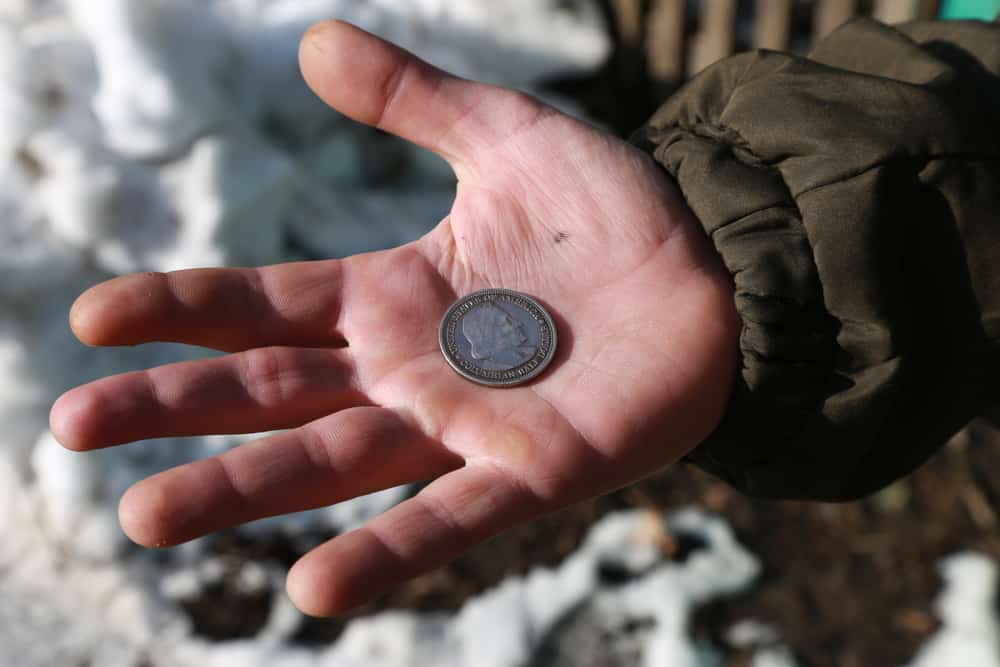
How Do You Keep Sterling Silver From Turning Black?
Keeping your sterling silver jewelry from turning black can be quite a hassle. It’s natural for it to tarnish over time due to exposure to air, moisture, and sulfur-containing compounds in the environment. However, you can follow a few tips to prevent this from happening.
- Firstly, you should store your silver jewelry in a cool, dry place. Humidity is the enemy here, so you should avoid keeping it in damp areas such as bathrooms or basements. Instead, store your jewelry in a jewelry box or a cloth pouch in a cool, dry place.
- Another important tip is to keep your silver jewelry clean. Regular cleaning can help prevent tarnishes from forming. After each use, clean your sterling silver jewelry with a soft or silver polishing cloth to remove any dirt, sweat, or oil that may have accumulated.
- Avoid exposing your silver jewelry to chemicals such as perfume, hairspray, and cleaning products, as they can cause your jewelry to tarnish. It’s best to avoid spraying these products directly on your jewelry.
- Wearing your sterling silver jewelry frequently can help prevent tarnish too. The
- Lastly, you can use anti-tarnish strips or pouches in your jewelry box to absorb any moisture or sulfur in the air and help prevent tarnish.
- Avoid wearing your silver jewelry while swimming: Chlorine and salt water can cause your silver jewelry to tarnish quickly. So, avoid wearing it while swimming in pools or the ocean.
- Dry your jewelry after exposure to moisture: If your silver jewelry gets wet, dry it thoroughly with a soft cloth before storing it.
And that is it; following these seven easy steps will make your silver jewelry last longer. Whatever you do with your silver items, it is always important to remember that it is a soft metal.
Is Silver Fake If It Turns Black?
No, silver is not fake if it turns black. Tarnish is a natural process that occurs over time when silver comes in contact with air, moisture, and sulfur-containing compounds in the environment.
Silver jewelry not plated with a non-tarnishing metal will eventually tarnish and turn black. However, this does not mean the silver is fake or of poor quality.
In fact, sterling silver, which is an alloy of 92.5% silver and 7.5% other metals, is a popular and valuable material for jewelry making. Tarnish can be removed with proper cleaning and maintenance, and the silver jewelry can be restored to its original shine.
Conclusion
Silver can turn black for multiple reasons. The bottom line is that it typically does so due to poor care. If you look after your silver items, you can keep them looking good for years to come. If you are genuinely concerned about your silver items, I recommend reading through some of our other articles so that you have a better understanding of what to look for and how to care for them.


